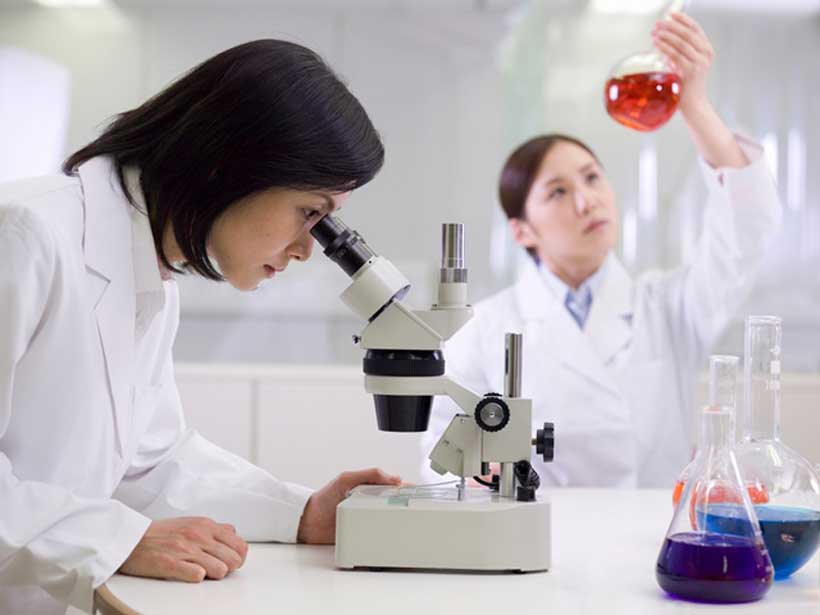International regulations are failing to keep up with the mind-boggling pace of new scientific discoveries and potential “cowboy” applications.
As we go about our daily lives we never quite know what is around the corner. Is there anything we are doing—a technology we are using–which could one day cause us harm or threaten our existence?
When scientists discovered the ozone layer was being depleted, policymakers eventually heeded the dire warnings of damage to the environment and human health, and a global agreement was reached to take remedial action.
Science is double-edged in that it can bring enormous benefits to humans, but at the same time it can create things we did not intend, with harmful consequences.
Today, scientists are using new tools like 3D printing, artificial intelligence and increasingly powerful computers, microscopes and satellites to better understand our world. They are discovering possible solutions to challenges we know about and are uncovering emerging challenges.
While innovative science holds out the possibility of solving many of the climate change and ecosystems challenges we face, we must be careful not to unleash a Frankenstein. Thus, it is important that society at large understands the global implications of new discoveries and governments agree on regulations in line with the precautionary principle.
Under this principle, stringent risk assessment and the inclusion of diverse stakeholder perspectives should be applied in the development and handling of innovative applications and products. The precautionary principle states that when human activities may lead to unacceptable harm that is scientifically plausible but uncertain, action should be taken to avoid or diminish that harm.
Part of UN Environment’s work is horizon-scanning for the latest discoveries with potentially global implications. To this end, it works with scientists and organizations across the world to highlight the most important emerging challenges for decision-makers in government, business and civil society and provide them with the knowledge and options to act quickly.
At the micro-level, there have been some amazing discoveries recently. Take seed preservation, which is vital given that the world is losing plant species at an unprecedented rate, with about one in five thought to be at risk of extinction.
The Global Strategy for Plant Conservation requires that 75 per cent of threatened plant species be conserved ex situ by 2020. But seed banking (where seeds are dried and stored in a vault at minus 20°C) is not an option for many threatened plants such as oak, chestnut and avocado trees. These trees have desiccation-sensitive seeds which are killed if dried. According to models published in the journal Nature Plants, 36 per cent of critically endangered plant species, 33 per cent of all trees and about 10 per cent of medicinal plants fall into this category.
So alternative techniques are needed. Researchers are investigating cryopreservation for these hard-to-store seeds, which include staples such as coffee and cocoa. Cryopreservation involves removing the plant embryo from the rest of the seed, then freezing it at very low temperatures in liquid nitrogen.
Meanwhile in the United States, scientists have demonstrated how they can generate small quantities of electricity from a mushroom covered in bacteria.
Researchers at Stevens Institute of Technology in the United States used 3D printing to attach clusters of energy-producing bugs to the cap of a button mushroom. They made the mushroom “bionic” by supercharging it with 3D-printed clusters of cyanobacteria (a group of photosynthetic bacteria) that generate electricity, and swirls of graphene nanoribbons that can collect the current. The mushroom, a fungus, provides an environment in which the cyanobacteria can last several days longer than on a silicone and dead mushroom as suitable controls. Such discoveries herald the possibility of harnessing bacteria in new ways for clean energy generation in the future.
Synthetic biology
One challenge identified by UN Environment and partners is the advanced genetic-engineering technology known as synthetic biology. Did you know that scientists can modify microorganisms like E. coli by rewriting their genetic code to turn them into tiny living factories that produce biofuel? Or that Baker’s yeast can also be reprogrammed to derive an antimalarial drug called artemisinin, which is normally sourced from the sweet wormwood plant?
Synthetic biology is defined by the Convention on Biological Diversity as a further development and new dimension of modern biotechnology that combines science, technology and engineering to facilitate and accelerate the understanding, design, redesign, manufacture and/or modification of genetic materials, living organisms and biological systems.
However, the intentional or accidental release of genetically engineered organisms into the environment could have significant negative impacts on both human and environmental health.
Synthetic biology has been identified as an emerging issue with potentially global implications. As such, it will feature alongside governance of geo-engineering, permafrost peatlands, maladaptation (actions that may lead to increased risk of adverse climate-related outcomes), the circular economy of nitrogen, and landscape connectivity in UN Environment’s flagship Frontiers Report due to be released in March 2019.


